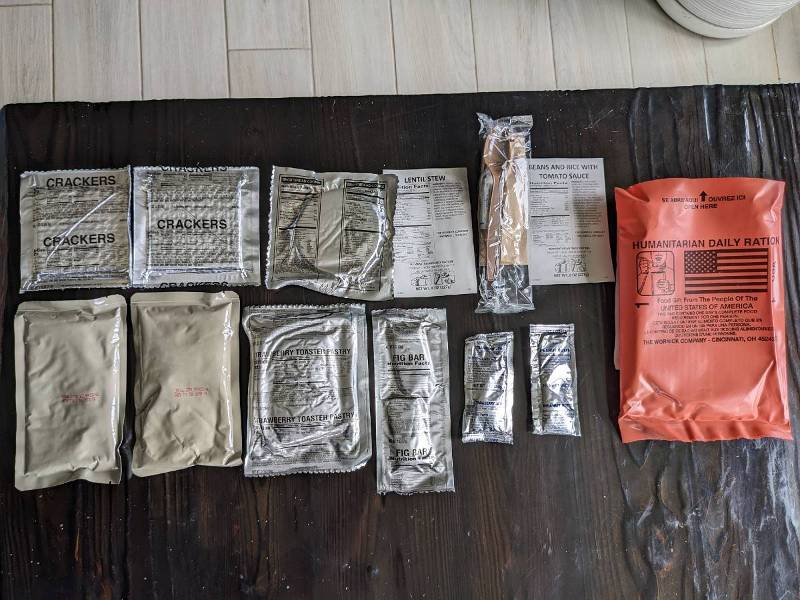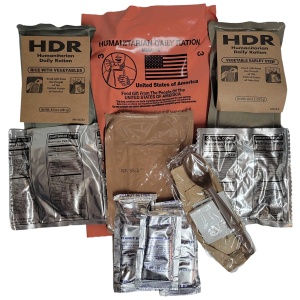Humanitarian Daily Rations
Showing the single result
The Background of Humanitarian Daily Rations as MREs
 Humanitarian Daily Rations (HDRs) emerged as a derivative of Meals Ready to Eat (MREs). Their purpose was to address the urgent needs of large populations affected by displacement or forced migration during emergency situations. Unlike MREs, which require three servings per day to sustain a soldier in the field, a single HDR is designed to provide a complete day’s sustenance for a moderately malnourished individual. Additionally, HDRs distinguish themselves from MREs by being free from any animal-derived ingredients, ensuring their compatibility with diverse religious and dietary restrictions. Each HDR contains 2200 calories, delivering ample nourishment to those in need.
Humanitarian Daily Rations (HDRs) emerged as a derivative of Meals Ready to Eat (MREs). Their purpose was to address the urgent needs of large populations affected by displacement or forced migration during emergency situations. Unlike MREs, which require three servings per day to sustain a soldier in the field, a single HDR is designed to provide a complete day’s sustenance for a moderately malnourished individual. Additionally, HDRs distinguish themselves from MREs by being free from any animal-derived ingredients, ensuring their compatibility with diverse religious and dietary restrictions. Each HDR contains 2200 calories, delivering ample nourishment to those in need.
Humanitarian Rations were developed to cater to specific dietary needs for large groups of people and were designed to withstand harsh environmental conditions, including the possibility of air drops (they literally drop these pouches from airplanes and helicopters!)
Origin: The initial requirement for HDRs arose from the Defense Security Cooperation Agency-Humanitarian Assistance/Demining Activities (DSCA-HA/D), which identified the need to provide food to displaced populations and refugees during emergency situations. HRs share a similar concept with Meals, Ready-to-Eat (MREs) as they consist of ready-to-eat thermally stabilized meals and complementary components, packaged in materials structurally akin to MREs. However, their similarities end there.
Components: HDRs are formulated to offer a full day’s sustenance for moderately malnourished individuals. To ensure broad acceptance among consumers with diverse religious and dietary restrictions worldwide, HRs contain no animal products or by-products, except for minimal amounts of dairy products. Additionally, alcohol and alcohol-based ingredients are prohibited. The meal bag resembles that of MREs but is salmon-colored and features graphics illustrating how to open the bag and consume the contents. The shipping container is similar to MREs but accommodates ten meal bags and includes markings and graphics specific to HDRs.
Specifications: Each case of HDRs weighs 25 lbs and occupies 1.02 cubic feet, while a pallet holds 1,237 lbs and occupies approximately 58.1 cubic feet.
Contents: As HDRs are intended to provide a complete day’s worth of food, each meal bag contains a minimum of two entrees. Complementary components are also included to ensure a balanced daily nutritional intake of at least 2200 calories, consisting of 10-13% protein, 27-30% fat, and not less than 60% carbohydrates. Non-food items in the meal bag include a spoon and a non-alcohol-based moist towelette.
Consumption: HDRs can be consumed as is, requiring no preparation. While the entrees can be eaten cold, they are generally more enjoyable when heated. The entree package can be immersed in hot water or heated in a pot over a flame.



